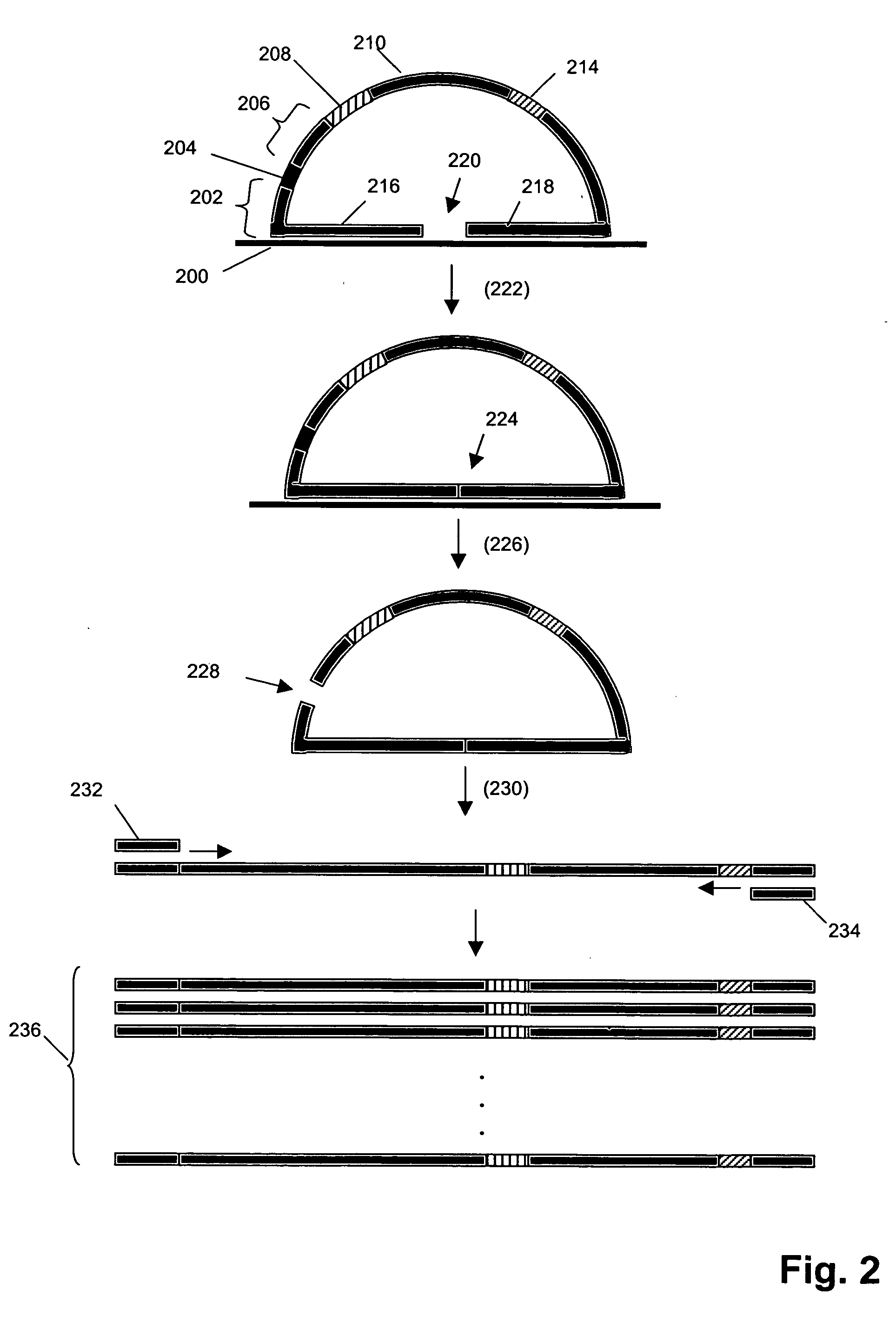System and methods for enhancing signal-to-noise ratios of microarray-based measurements
a microarray and signal-to-noise ratio technology, applied in the field of systems and methods for can solve the problems of noise and loss of signals, reduce duplex stability or signal intensity, and difficult challenges remain, and achieve the effect of enhancing the signal-to-noise ratio of measurements
- Summary
- Abstract
- Description
- Claims
- Application Information
AI Technical Summary
Benefits of technology
Problems solved by technology
Method used
Image
Examples
Embodiment Construction
[0045] The present invention provides methods and systems for enhancing signal-to-noise ratios of measurements of labeled target sequences hybridized to complementary sequence attached to solid phase supports, such as microarrays. In one aspect, this objective of the invention is accomplished by generating labeled target sequences that have little or no overhanging ends when hybridized to complementary end-attached probes on the solid phase supports. In another aspect, labeled target sequences are generated by processing amplicons derived from target polynucleotides in a sample or specimen. As explained more fully below, preferably such amplicons are produced using sample-interacting probes that are circularizing probes.
[0046] Systems of the invention comprise (i) a set of probes that interact with target polynucleotides in a sample (i.e. “sample-interacting probes”) to produce amplicons that either each contain a segment of a target polynucleotide or an oligonucleotide tag for whi...
PUM
| Property | Measurement | Unit |
|---|---|---|
| Tm | aaaaa | aaaaa |
| pH | aaaaa | aaaaa |
| temperature | aaaaa | aaaaa |
Abstract
Description
Claims
Application Information
 Login to View More
Login to View More - R&D
- Intellectual Property
- Life Sciences
- Materials
- Tech Scout
- Unparalleled Data Quality
- Higher Quality Content
- 60% Fewer Hallucinations
Browse by: Latest US Patents, China's latest patents, Technical Efficacy Thesaurus, Application Domain, Technology Topic, Popular Technical Reports.
© 2025 PatSnap. All rights reserved.Legal|Privacy policy|Modern Slavery Act Transparency Statement|Sitemap|About US| Contact US: help@patsnap.com



